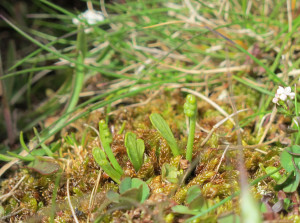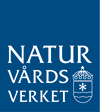Species targeted by the project
| English name | Latin name | Natura kod |
| little grapefern | Botrychium simplex | 1419 |
| Stag Beetle | Lucanus cervus | 1083 |
| Hermit Beetle | Osmoderma eremita | 1084* |
| Anthrenochernes stellae | 1936 | |
| Pied Avocet | Recurvirostra avosetta | A132 |
| European Golden plover | Pluvialis apricaria | A140 |
| Ruff | Philomachus pugnax | A151 |
| Bar-tailed Godwit | Limosa lapponica | A157 |
| Sandpiper | Tringa glareola | A166 |
| Caspian Tern | Sterna caspia | A190 |
| Sandwich Tern | Sterna sandvicensis | A191 |
| Common Tern | Sterna hirundo | A193 |
| Arctic Tern | Sterna paradisaea | A195 |
| Little Tern | Sterna albifrons | A195 |
Bothrychium simplex, the little grapefern is a small grenish-white fern, which is
decreasing all over Europe. It is growing mainly in grazed seeshore grasslands.
Ten current sites are known in Sweden. One of this sites is Idö (Arholma-Idö SE010385),
a new Natura 2000 site and also a new part of the GRACE project (2013).
The project will also improve the possibilities of a long-term survival of
Bufo calamita (Annex IV) and Tortella rigens (A1998).
Habitats targeted by the project
| English name | Natura kod |
| Atlantic salt meadows | 1330 |
| Boreal Baltic costal meadows | *1630 |
| Northern Atlantic wet heaths with Erica tetralix | 4010 |
| European dry heaths | 4030 |
| Juniper communis formations on heaths or calcareous grasslands | 5130 |
| Rupicolous calcareous or basophilic grasslands of the Alysso-Sedion albi | *6110 |
| Semi-natural dry grasslands and scrubland facies on calcareous substrates (Festuco-Brometalia) (Important orchid sites) | 6210 |
| Species-rich Nardus grasslands, on siliceous substrates in mountain areas (and submountain areas, in Continental Europe) | *6230 |
| Fennoscandian lowland species-rich dry to mesic grasslands | *6270SF |
| Molinia meadows on calcareous, peaty or clayey-siltladen soils (Molinian caeruleae) | 6410 |
| Siliceous rock with pioneer vegetation of the Sedo-Scleranthion or of the Sedo albi-Veronicion dillenii | 8230 |
| Fennoscanidan wooded pastures | 9070SF |
Fennoscandian wooded meadows *6530
Background
All of the project sites are situated in an archipelago environment with habitat types which have a unique
flora and fauna. The coastal environments in the specific counties have many similarities, but also many
differences. This is partly due to the specific farming history (see part B1). Together with the geological
conditions; a Pre-Cambrian bedrock with a very hard and nutrient poor granite or gneiss, these factors have
created these very special coastal plant and animal communities. The Pre-Cambrian limestone areas on the
east coast of Svealand and the areas of shell beds both favour calcareous communities with their special flora.
The local climate of the outer archipelago is influenced more by the sea than the land, which leads to for
example cold springs and warm autumns as well as cool, but dry and sunny summers. The local climate can
however, be more humid when compared with the mainland due to more frequent dews and mist. These
distinctive characteristics of the local climate are typical of many coastal environments, but are more
accentuated on the small islands surrounded by large areas of open water in the archipelago. In Blekinge the
variation between fresh and brackish water has created even more unique conditions for a rich biodiversity.
This area also constitutes the Baltic Sea’s most southerly archipelago and large areas of the archipelago and
mainland are covered with deciduous woodland. There is nowhere else in Europe where deciduous woodland
meets the sea in such a quantity than along the coast of Blekinge! Many of the smaller islands are also very
important for breeding sea birds. The coast and archipelago of Blekinge is host to a large number of nationally
red-listed species and a large proportion of the area is also included in the Blekinge Archipelago Candidate
Biosphere Reserve, about which UNESCO is expected to make their decision in the late summer of 2010.
Juniper communis formations on heaths or calcareous grasslands
In Blekinge this habitat is primarily made up of coastal nutrient poor pastures on heaths, where there is a
significant amount of juniper bushes favoured by grazing. There are often large areas of exposed bedrock
where this habitat occurs. These areas have significantly reduced in economic importance and thus grazing
as been abandoned followed by the consequential scrubbing over, primarily of juniper and birch. The habitat
type is significant and valuable both nationally and internationally, because when it occurs in the archipelago
it is quite unique.
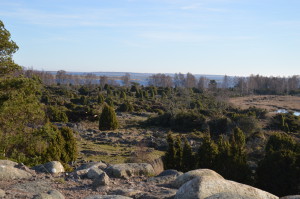
Juniperus communis on Öppenskär in Blekinge
Fennoscandian wooded pastures
A large number of species are associated with big, old, open grown oaks. Many of these insects, wood decay
fungi and lichens are nationally red-listed. Compared with large parts of the rest of Europe, these valuable oak
habitats are very well represented in some parts of Sweden. The greatest biodiversity is associated with open
grown trees with wide crowns because these trees reach a very great age and develop very special structures.
Protection from the wind and exposure to the sun in open situations creates a warm microclimate which also
contributes to the high nature conservation values. Such trees have grown up and lived the majority of their
ives in open pastures. Grazing keeps the regenerating and competing trees in check close to the crowns of the
ancient oaks. Practically speaking, grazing even today, is the only way to maintain these open areas especially
because this also secures the future for new open grown oaks which can become the ancient trees of the future.
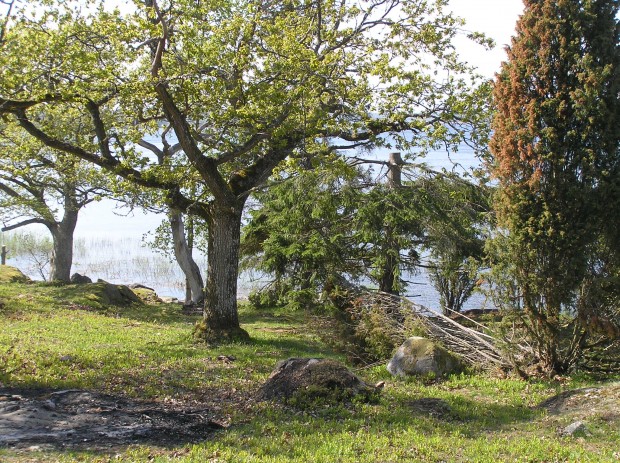
Fennoscandian wooded pastures in Blekinge
Heathlands and Mosaic habitats
The project area along the Swedish west coast is extremely heterogeneous with different habitat types within a
mosaic structure on difficult terrain which is included and is important for the habitat as a whole. Together these
create a very valuable environment for the conservation of the unique plant and animal communities associated
with the archipelago.
The heatland habitat types 4010, 4030 and 8230, with elements of 6270SF often occur together as patches in a
mosaic surrounded by exposed areas of bedrock. It is impossible to find a particular pattern, where the parts
which make up the mosaic structure including the areas of difficult terrain can vary from 0 to 100 percent. There
is also no general pattern regarding which habitat types are included in the local mosaic structure. The local
topography and micro-geology with access to for example water and shell beds create the local conditions for the
terrain and how many and which habitat types are included in the local homogenous area. This means that it is
always difficult to estimate in what proportions these habitat types will be represented after restoration. The plant
communities of the habitat types and the rocky areas often have areas of plants which are low growing,
poor-competitors which are extremely sensitive to scrubbing over. These are found in nutrient poor habitats often
with salt tolerant plants.
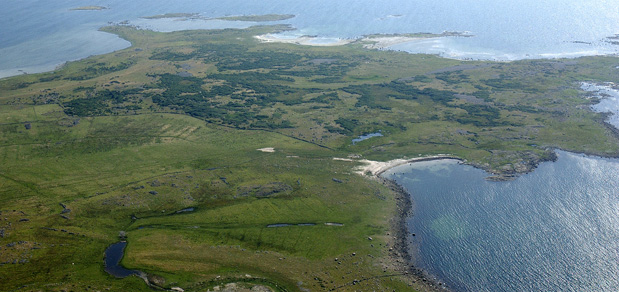
Heathlands and grassland on Balgö (SE0510050)
Several threatened species have their primary distribution in these communities along the coast and are very
rare in other parts of Sweden e.g. the plants allseed (Radiola linoides), the eybright (Euphrasia micrantha),
lousewort (Pedicularis sylvatica), Montia minor, silver hair grass (Aira caryophyllea) and water purslane
(Peplis portula), but also the internationally rare species such as Gentiana baltica, chaffweed (Anagallis minima)
and estuarine sedge (Carex vacillans) endemic to Scandinavia. In addition there is a significant number of fungi
dependant on management, including several red-listed, are found in these habitats’.
The biodiversity of the heatlands is depended on regulary traditional burning actions and grazing. They are
semi-natural habitats and has been coevolving for about tusen years with human societies. Fire involves a change
in the chemical qualities in the soil. The pH of the soil increases when the acidic humus layer burns away. Minerals
are released partly from increased decomposition and partly from the ash which forms after burning. Part of the
nitrogen content of the soil also dissipates with the smoke and burning can stimulate the seed bank. It is important
to burn away the mosses, some of the heather turves and the older woody heather to favour biodiversity in the
heathlands. When bare soil is exposed, new seeds get the opportunity to grow. Burning of the accumulated leaf
litter is generally speaking a good restoration method. Burning increases the chances for the flora which is favoured
by management to establish and survive because they are often poor competitors in contrast to the fast growing
species associated with overgrowing. Fauna such as birds, reptiles and insects are favoured by burning when the
variation in flora and structure increases.
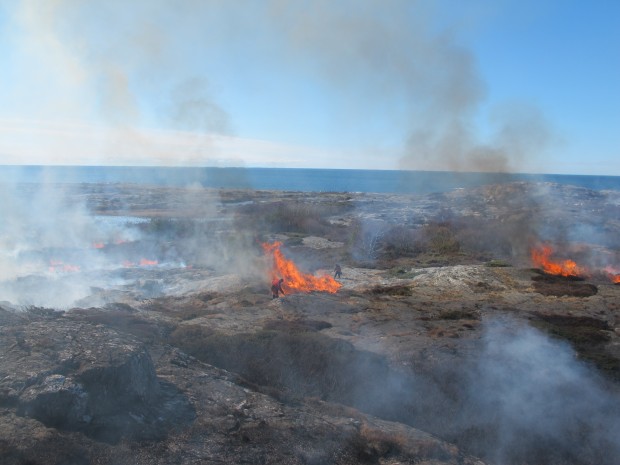
Burning of Heatlands on Rörö (Sälöfjorden SE0520036)


